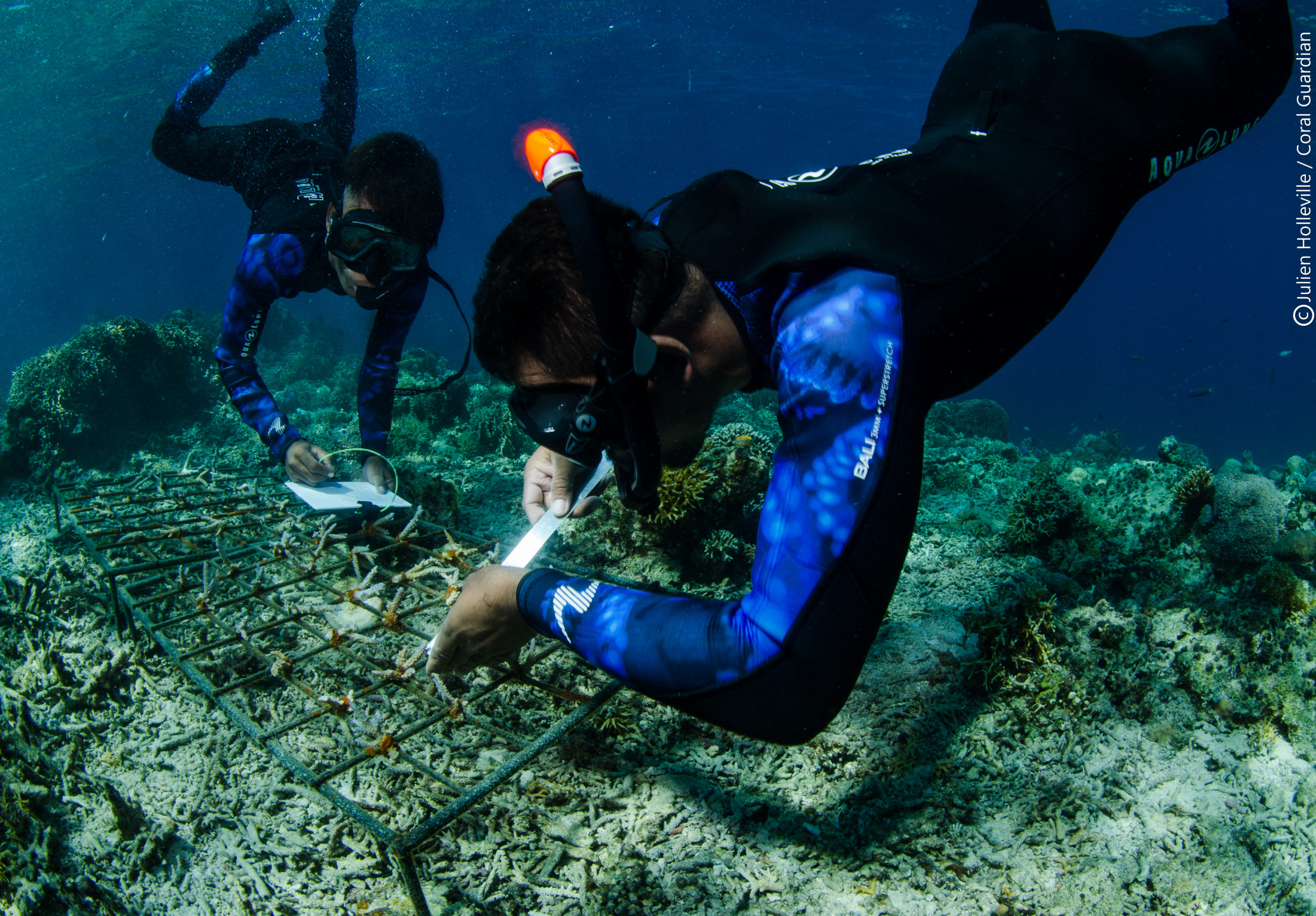Socio-ecological management of coral reefs: linking practice and research

Why is monitoring important for conservation projects?
Conservation and restoration projects are usually born and guided by objectives set at the early stages, which can consider biological, social, economic or governance dimensions of a territory. In order to know the extent to which the objectives are met throughout the project development, monitoring is usually included in the planning phases (WCS, 2002).
In fact, monitoring consists in gathering relevant information of the project’s context periodically (meaning several times, not only once). By doing so, it is possible to acknowledge to what extent the project is meeting its objectives and what management actions are assertive and which are not, therefore aligning the measures with the project’s aims. At the same time, it facilitates the communication with the project’s different stakeholders, and it prevents resources (mainly money and time) to be invested in the wrong efforts (Stephenson, 2019). Nevertheless, monitoring is often recognized as a challenge for several reasons. Amongst them, there is the fact that it has to be maintained throughout long lapses of time for it to be useful, and it also requires the selection of the most relevant parameters.
Socio-ecological systems framework: what it is and the link with coral reefs
In 1998, Fikret Berkes and Carl Folke proposed the socio-ecological systems (SES) framework to describe how humans and ecosystems are tightly linked, which was later on enriched by Elinor Ostrom in 2009. Since then, it has been used to describe the interactions and dependencies between the two sub-systems around the globe. In fact, this framework sustains that there is no point in separating ecosystems from people when addressing their study or management, since changes in one will necessarily affect the other, whether positively or negatively (Figure 1; Stockholm Resilience Center, 2019).

Figure 1: Schematic explanation of the socio-ecological systems with the links between human system and the ecosystem. Source: SARAS (2019).
For example, coral reefs provide a great number of goods and services to millions of people around the world: fisheries, tourism development, coastline protection, amongst others. At the same time, human activities and practices have an effect on the status and health of coral reefs both locally and globally (Hughes et al, 2017). This is the case of coral degradation due to destructive fishing techniques, coral bleaching due to higher temperatures with the increased amount of CO2 in the atmosphere, but also the case of coral recovery thanks to restoration and conservation practices.
Despite the relevance of the SES framework for monitoring activities, it has been more commonly used in academic research, and rather shyly applied in real-world practices, (Virapongse et al, 2016). Why? First, because of the complexity of the SES, since it often considers variables derived from different disciplines to describe the contexts. This can make it difficult for managers to choose the right parameters and apply them. Also, it shows a poor understanding of managers’ resources (such as time or expertise). However, despite this difficulty, the exclusion of the SES framework in monitoring may reduce the understanding of the project’s social and ecological outcomes and how they were reached (Gurney et al, 2019).
Bringing a socio-ecological framework to coral reef management monitoring
Given this difficulty of dialogue between tools developed by academic research and the practical needs on the ground, Georgina G. Gurney and collaborators of different institutions started a process in 2014 where practitioners and researchers conjointly built and implemented an SES-based framework to monitor the results of coral reef management in four countries: Fiji, Indonesia, Kenya and Madagascar.
The process lasted for three years, and its overview was published in 2019. During this period, regional workshops between the different actors resulted in setting up monitoring objectives, a selection of key indicators to be followed up on and feedback from field-application. One of the challenges was the selection of the indicators: in fact, they should be able to represent local realities and at the same time be applicable across different countries.
The resulting SES monitoring framework comprised 90 social and ecological indicators grouped in general categories (Figure 2), which have been applied across 85 communities in the 4 countries. It contributed to bring the SES perspective into management practice, giving practitioners the possibility to consider feedbacks between the different categories as well as resulting in quantitative information about their performance.
A key aspect to ensure the implementation’s success was the fact that the practitioners’ team took part in the building process, and therefore the gathered information was considered relevant, legitimate, and therefore useful. Also, the training of the practitioner’s team was a keystone, and it was addressed through guidelines translated in different languages.

Figure 2: General outlook of the socio-ecological system framework, based on Ostrom (2007, 2009) scheme. For each category there are examples of used indicators. Source: Gurney et al (2019).
In conclusion, the experience of Gurney and collaborators show how researchers and field managers’ knowledge can complement to better manage coral reefs and follow up the interventions. Throughout this process, and despite the contextual differences, the implication of local communities appears as a pillar to achieve socio-ecological objectives, setting aside the one-direction approach commonly used in natural resource management.

